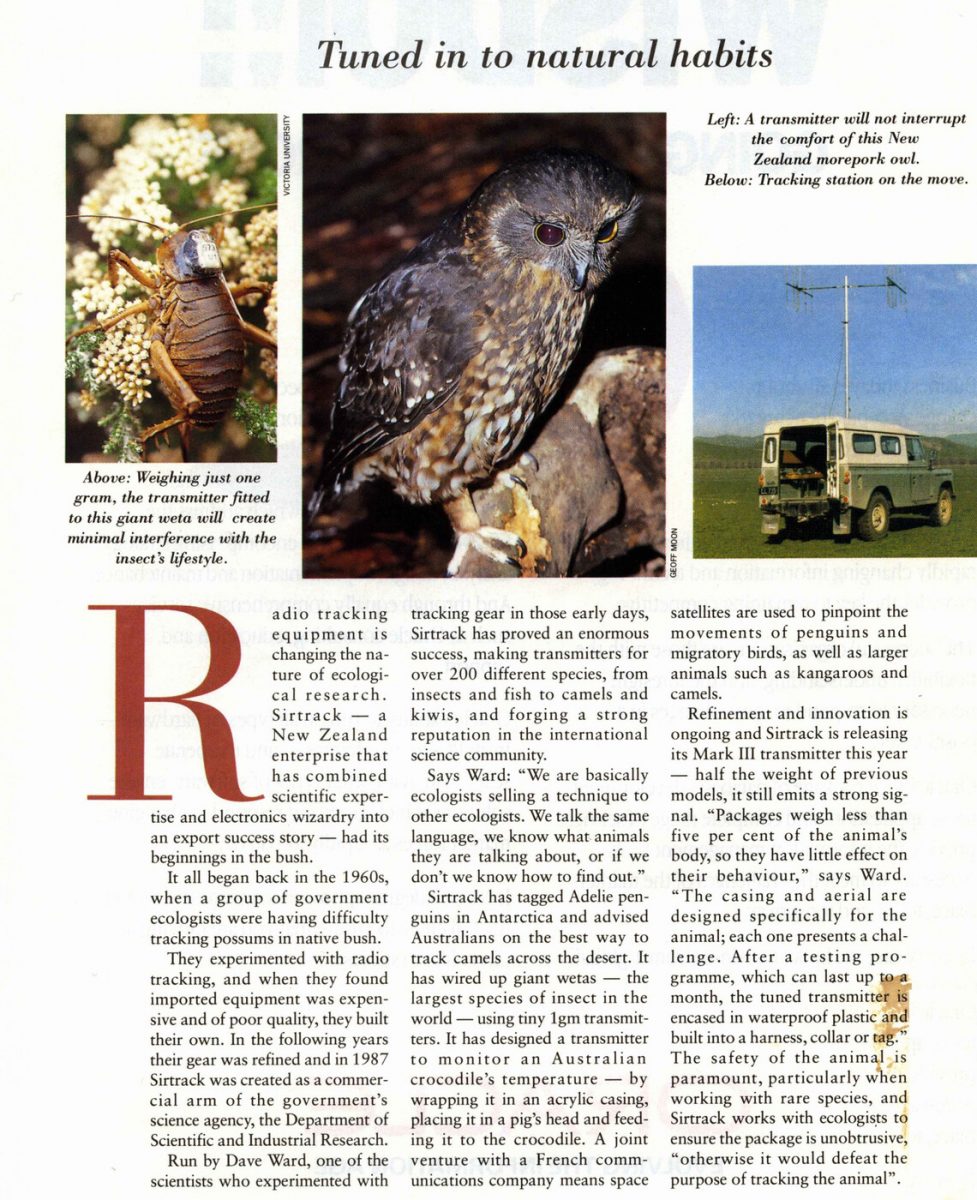Tuned in to natural habits
Radio tracking equipment is changing the nature of ecological research. Sirtrack – a New Zealand enterprise that has combined scientific expertise and electronics wizardry into an export success story had its beginnings in the bush.
It all began back in the 1960s, when a group of government ecologists were having difficulty tracking possums in native bush.
They experimented with radio tracking, and when they found imported equipment was expensive and of poor quality, they built their own. In the following years their gear was refined and in 1987 Sirtrack was created as a commercial arm of the government’s science agency, the Department of Scientific and Industrial Research.
Run by Dave Ward, one of the scientists who experimented with tracking gear in those early days, Sirtrack has proved an enormous success, making transmitters for over 200 different species, from insects and fish to camels and kiwis, and forging a strong reputation in the international science community.
Says Ward: “We are basically ecologists selling a technique to other ecologists. We talk the same language, we know what animals they are talking about, or if we don’t we know how to find out.”
Sirtrack has tagged Adelie penguins in Antarctica and advised Australians on the best way to track camels across the desert. It has wired up giant wetas – the largest species of insect in the world – using tiny 1gm transmitters. It has designed a transmitter to monitor an Australian crocodile’s temperature by wrapping it in an acrylic casing, placing it in a pig’s head and feeding it to the crocodile. A joint venture with a French communications company means space satellites are used to pinpoint the movements of penguins and migratory birds, as well as larger animals such as kangaroos and camels.
Refinement and innovation is ongoing and Sirtrack is releasing its Mark III transmitter this year – half the weight of previous models, it still emits a strong signal. “Packages weigh less than five per cent of the animal’s body, so they have little effect on their behaviour,” says Ward.
“The casing and aerial are designed specifically for the animal; each one presents a challenge. After a testing programme, which can last up month, the tuned transmitter is encased in waterproof plastic built into a harness, collar or tag.”
The safety of the animal is paramount, particularly when working with rare species, and Sirtrack works with ecologists to ensure the package is unobtrusive, “otherwise it would defeat the purpose of tracking the animal”
Photo caption – Left: A transmitter will not interrupt the comfort of this New Zealand morepork owl.
Photo caption – Below: Tracking station on the move.
Photo caption – Above: Weighing just one gram, the transmitter fitted to this giant weta will create minimal interference with the insect’s lifestyle.












Do you know something about this record?
Please note we cannot verify the accuracy of any information posted by the community.